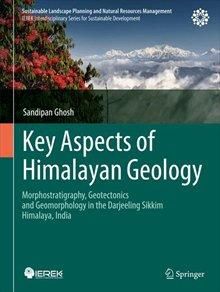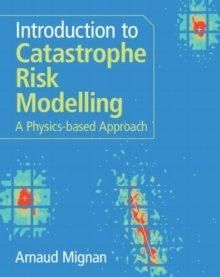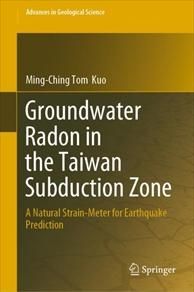Linear Algebra for Earth Scientists
◆日本地質学会第132年学術大会セール 開催中!:2025年10月24日(金)ご注文分まで
※上記表示の販売価格は割引適用後の価格です 出版済み 3-5週間でお届けいたします。 Title: Linear Algebra for Earth Scientists Author: Walker, J. Douglas / McLean, Noah M. Publisher: Taylor & Francis ISBN: 9781032555942 Cover: HARDCOVER Date: 2024年04月 こちらの商品は学校・法人様向け(機関契約)のオンラインブック版がございます。 オンラインブックの価格、納期につきましては弊社営業員または当ECサイトよりお問い合わせください。  DESCRIPTION Linear Algebra for Earth Scientists is written for undergraduate and graduate students in Earth and Environmental sciences. It is intended to give students enough background in linear algebra to work with systems of equations and data in geology, hydrology, geophysics, or whatever part of the Earth Sciences they engage with. The book does not presuppose any extensive prior knowledge of linear algebra. Instead, the book builds students up from a low base to a working understanding of the sub t that they can apply to their work, using many familiar examples in the geosciences. Features * Suitable for students of Earth and Environmental Sciences * Minimal prerequisites - written in a way that is accessible and engaging for those without a mathematical background * All material presented with examples and applications to the Earth Sciences TABLE OF CONTENTS 1. Rows and Columns. 1.1. The Three-Point Problem. 1.2. Can we solve this more easily using Linear Algebra? 1.3. Thinking about Columns and Vectors. 1.4. Vectors. 1.5. A Geochemical Example. 1.6. Summary. 1.7. Exercises. 2. Matrix multiplication. 2.1. Multiplying the Linear Algebra Way. 2.2. Transpose of a Vector or Matrix. 2.3. Linear Combinations. 2.4. Linear Transformations. 2.5. Geologic Transformations. 2.6. What more can we do with Matrices? 2.7. More about 3D Rotations. 2.8. Summary. 2.9. Exercises. 3. Solving Ax = b. 3.1. Elimination. 3.2. Elimination Matrices and Elementary Row Operations. 3.3. Elementary Matrices and their Inverses. 3.4. Our First Factorizations - A = LU = LDU. 3.5. Gauss-Jordan Elimination and Computing A-1. 3.6. The Three-Point Problem Many Ways. 3.7. Reworking the Geochemical Example. 3.8. Summary. 3.9. Exercises. 4 When does Ax = b have a solution? 4.1. Slip with Different Number of Faults. 4.2. The Three-Point Problem with more Points. 4.3. The Vector b must be in the Column space of A to find x. 4.4. Exploring the vector spaces and Subspaces of Ax=b. 4.5. Rank and Size of a determines if we can solve Ax = b. 4.6. Summary. 4.7. Exercises. 5. Solving Ax = b when there is no solution. 5.1. Projection. 5.2. Solving Projection for Lines and Planes. 5.3. Can we fit something other than a Line or Plane. 5.4. Summary. 5.5. Exercises. 6. Determinants and Orthogonality. 6.1. Determinants, Strain, and Geologic Transformations. 6.2. Strain, Determinants, and Basic Matrix Operations. 6.3. Cross Products. 6.4. Orthogonality and Gram-Schmidt Process. 6.5. Decomposition - Our next Factorization. 6.6. Summary. 6.7. Exercise. 7. An Earth Scientist’s view of the characteristics of Eigenvalues and Eigenvectors. 7.1. Motivation for Eigenanalysis. 7.2. Eigenvalues and Eigenvectors. 7.3. Looking at Data and not Ax=b. 7.4. Diagonalization into Xλx-1. 7.5. A. Detailed look at what XT, Λ, and X Do. 7.6. Summary. 7.7. Exercises. 8. Change of Basis, Eigenbasis, and Quadratic Forms. 8.1. Change of Basis. 8.2. What do these results mean for the Eigenbasis? 8.3. The Geologist’s Dilemma - Setting a Bruntonr Compass. 8.4. A Nice Gneiss. 8.5. Stressing the use of Eigenanalysis. 8.6. Quadratic Forms. 8.7. Summary. 8.8. Exercises. 9. Singular Value Decomposition. 9.1. What is Singular Value Decomposition or SVD? 9.2. SVD for any Matrix. 9.3. When do Simple and Pure Shear produce the same strain Ellipse? 9.4. Using SVD to solve Ax = b. 9.5. Condition Numbers, or, when good Matrices go bad. 9.6. Summary. 9.7. Exercises. 最近チェックした商品

|
||||||||||||||||||||||||||||||||||||||||||||||||




























